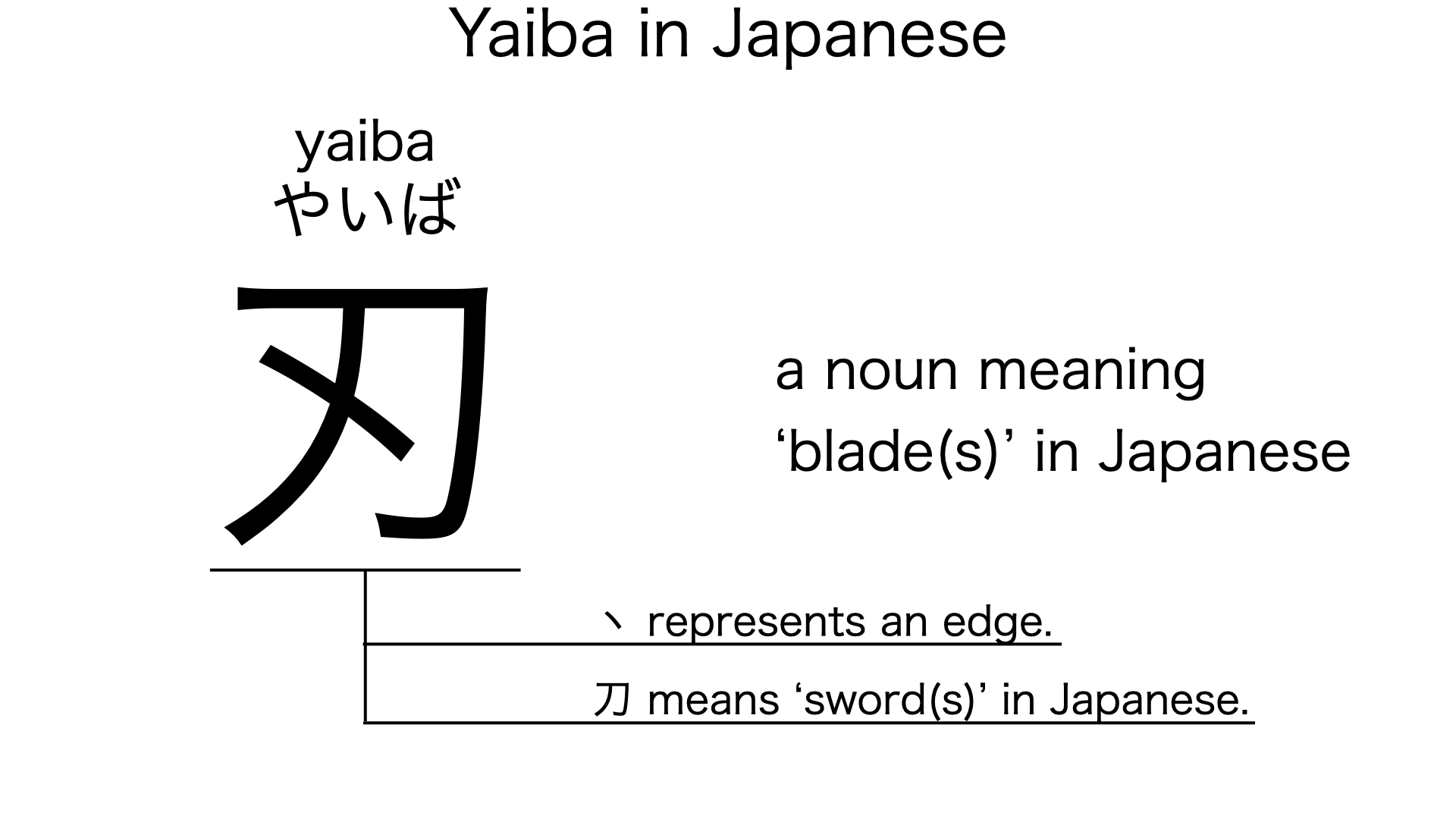What does “yaiba” mean in Japanese?
Native speakers say “yaiba” to mean ‘blade’ in Japanese. Perhaps, some Japanese learners know this word as it is sometimes used in Japanese movies, video games, songs, novels, manga, anime, and the like. In this blog post, however, I will explain this word in detail based on its kanji character. And also, I will explain how to use it through example sentences. My explanations would help Japanese learners understand “yaiba” more clearly. Then, let’s get started!
Contents
Definition and meaning of “yaiba”
Let me start with the definition and meaning of “yaiba”.
- yaiba – 刃 (やいば) : a noun meaning ‘blade’ in Japanese. This can also work as plural. Learn more about Japanese plural.
The definition and meanings are simple and clear. To understand this noun more clearly, however, let me explain its kanji character in detail.
What does “yaiba” literally mean in Japanese?
The kanji character of “yaiba” consists of the following two parts:
- 刀 : a kanji character used to mean ‘sword’ in Japanese.
- 丶 : a kanji character used to represent an edge.
From these two parts, we can understand that the formed kanji character literally means ‘edges of swords’ in Japanese. This literal interpretation is not completely in line with the actual meaning, but still understandable, I think. Edges of swords are often called blades.

When we meet new kanji characters, we should check their parts in detail to understand their meanings clearly and deeply. In many cases, kanji parts tell us a lot about the meanings of the characters they form. Actually, here, we could get the better understanding of “yaiba” through the detailed check above.
So far, I’ve explained the definition and meaning of “yaiba” together with its kanji parts. Then, let me explain how to use it through the example sentences below.
Example #1: how to say “blades” in Japanese
surudoi yaiba wa abunai desu yo – 鋭い刃は危ないですよ (するどいやいばはあぶないですよ)
Sharp blades are dangerous.
Below are the new words used in the example sentence.
- surudoi – 鋭い (するどい) : an i-adjective meaning ‘sharp’ in Japanese.
- wa – は : a binding particle working as a case marker or topic marker. In the example, this works after “surudoi yaiba” to make the subject in the sentence.
- abunai – 危ない (あぶない) : an i-adjective meaning ‘dangerous’ in Japanese.
- desu – です : an auxiliary verb used after a noun or adjective to make it sound polite. Probably, this is well known as a part of Japanese desu form. In the example, this is used after “abunai” to make it sound polite.
- yo – よ : a sentence-ending particle used to state the fact or idea in a soft way. As the definition suggests, this is used at the end of the example sentence to state the speaker’s idea softly.
This is a typical usage of “yaiba”. In this example, it works together with the i-adjective, “surudoi”, to mean ‘sharp blades’ in Japanese.
Example #2: another usage of “yaiba”
kono katana no yaiba wa utsukushii – この刀の刃は美しい (このかたなのやいばはうつくしい)
The blade of this sword is beautiful.
Below are the new words used in the example sentence.
- kono – この : a determiner used before a noun which refers to something close to the speaker. In the example, this is used before “katana” to say “this sword” in Japanese.
- katana – 刀 (かたな) : a noun meaning ‘sword’ in Japanese. This can also work as plural.
- no – の : a case particle joining two nouns or noun equivalent words. Normally, the first one can work as a modifier to describe the second. In the example, this works to join “kono katana” and “yaiba”. The formed phrase literally means ‘the blade of this sword’ in Japanese. Word orders in Japanese and English are different, but the role of this case particle is similar to that of the English preposition, “of”.
- utsukushii – 美しい (うつくしい) : an i-adjective meaning ‘beautiful’ in Japanese.
This is another typical usage of “yaiba”. In this example, it works as a part of the noun phrase, “kono katana no yaiba”, which means ‘the blade of this sword’ in Japanese. When we want to mean a ‘blade’ or ‘blades’ in Japanese, anyway, this noun is a very good option.
Summary
In this blog post, I’ve explained the definition and meaning of “yaiba” in detail based on its kanji character. And also, I’ve explained how to use it through example sentences. Let me summarize them as follows.
- yaiba – 刃 (やいば) : a noun meaning ‘blade’ in Japanese. This can also work as plural. This kanji character literally means ‘edges of swords’ in Japanese. This literal interpretation is not completely in line with the actual meaning, but still understandable, I think. Edges of swords are often called blades.
Hope my explanations are understandable and helpful for Japanese learners.
Leave a Reply